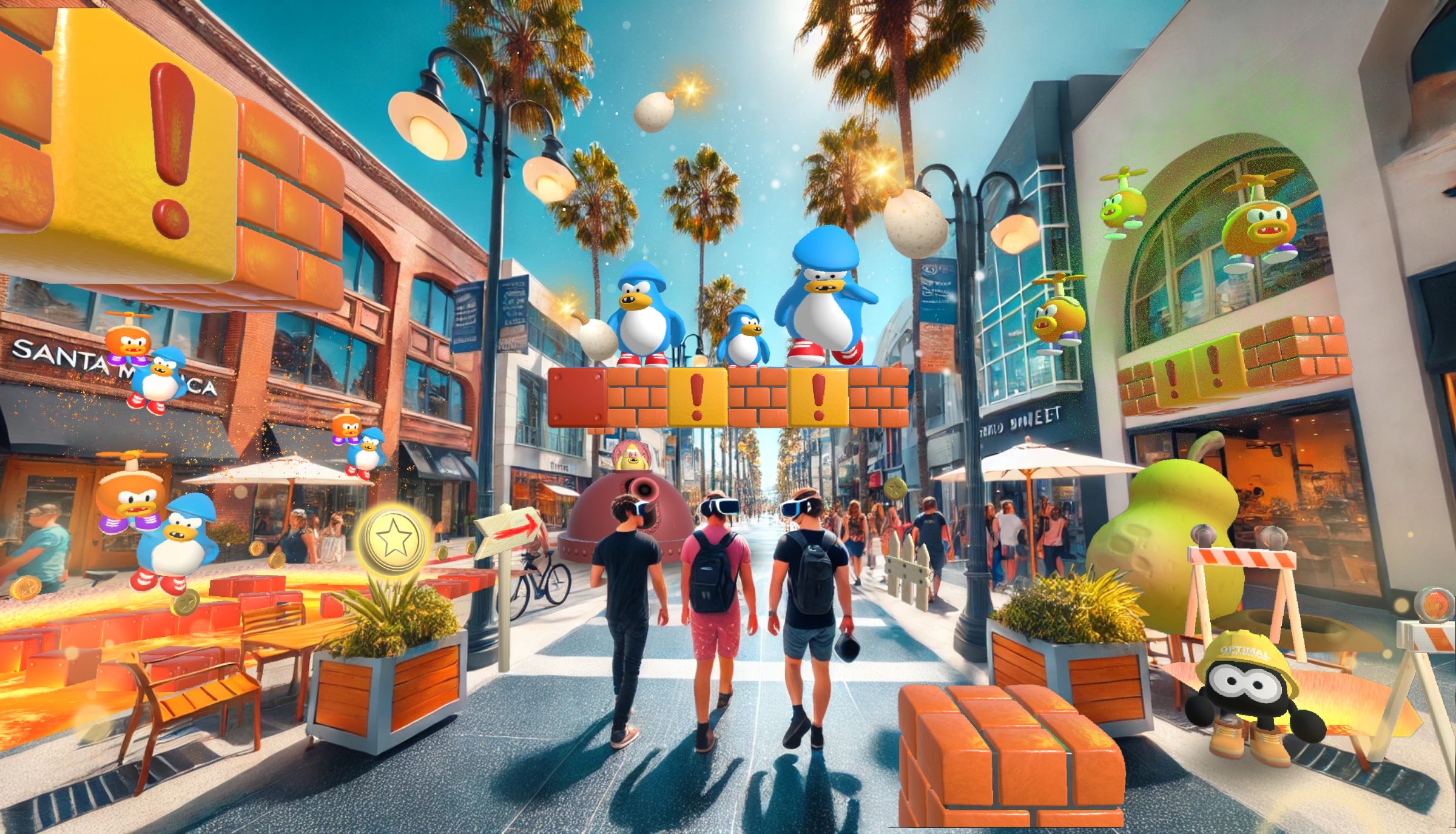
Dream Park is a groundbreaking mixed reality theme park created by Two Bit Circus. This innovative concept aims to revolutionize the entertainment industry by providing immersive experiences that seamlessly combine the digital and physical realms.
Brent Bushnell, the founder of Two Bit Circus, will present a keynote at the VR Arcade and Attraction Summit about the game-changing concept of Downloadable Theme Parks. Here are some key points to expect:
The rising popularity of mixed reality experiences indicates a significant shift in the entertainment sector. With advancements in technology, these immersive attractions are becoming increasingly common and captivating. Visitors can look forward to a new era where their experiences can be both personalized and communal, fueled by state-of-the-art innovations. Dream Park represents this evolution, establishing a new benchmark for leisure and adventure.
Mixed reality (MR) technology merges the physical and digital worlds, creating immersive experiences that allow users to interact with both environments simultaneously. This differs from virtual reality (VR), where users are fully immersed in a created environment, and augmented reality (AR), which overlays digital content onto the real world without full immersion.
Mixed reality headsets, such as the Meta Quest, play a pivotal role in delivering these experiences. These devices come equipped with:
The benefits of MR headsets include enhanced immersion, reduced motion sickness risks, and broader application possibilities across various entertainment formats. Many users have reported improved comfort during extended gameplay sessions due to these advancements.
Despite the excitement surrounding VR experiences, issues like motion sickness have been prevalent. Developers are actively addressing these concerns through:
As mixed reality continues to evolve, its integration into venues like Dream Park promises to redefine entertainment by blending reality with imaginative digital creations.
The invisible theme park at Dream Park introduces a groundbreaking approach to location-based entertainment. Unlike traditional theme parks, this concept utilizes advanced technology to create immersive, mapped experiences that engage users across a substantial physical space of 30,000 square feet in Santa Monica.
These are meticulously crafted environments that blend digital elements with the real world. Users interact with virtual characters and objects projected into their surroundings through mixed reality headsets, enhancing their emotional connection to the experience.
The design process focuses on creating a harmonious relationship between the digital and physical worlds. Designers work collaboratively to ensure that every mapped experience feels natural and intuitive, allowing users to navigate easily while remaining fully immersed.
In developing these experiences, attention is given to user feedback, preferences, and behaviors. This approach ensures that attractions remain engaging and relevant, adapting over time as technology advances.
A multi-disciplinary team including artists, engineers, and storytellers collaborates in crafting each mapped experience. They consider:
The invisible theme park represents a new frontier in entertainment where creativity meets technology. As visitors engage with these unique experiences, they discover an interactive world that is both familiar and fantastical.
Downloadable theme parks are changing the game for location-based virtual reality experiences. Thanks to advancements in technology, these parks enable users to explore immersive environments without leaving their homes or local attractions. This innovation goes beyond traditional amusement parks, opening up new possibilities for entertainment.
Two Bit Circus, led by founder Brent Bushnell, is leading the way in this movement with Dream Park—an innovative mixed reality theme park. At the upcoming VR Arcade and Attraction Summit, Bushnell will discuss the potential of downloadable theme parks. Here’s how these digital attractions can generate revenue:
The rise of downloadable theme parks signifies a major shift in how we enjoy entertainment. As technology continues to evolve, the potential for monetizing these digital attractions will likely expand, making them an essential part of the entertainment industry. Visitors are no longer just passive consumers; they actively participate in an immersive experience that merges reality with imagination.
Dream Park is designed to be more than just a destination for thrilling rides and attractions. It aims to create immersive gaming experiences that are specifically crafted to foster social interactions and community engagement. Here’s a glimpse into what visitors can expect:
Visitors can participate in multiplayer games that require teamwork and communication. These experiences not only promote interaction among players but also create bonds as they navigate challenges together.
Regularly scheduled tournaments allow players to compete against one another. This competitive element enhances the excitement and encourages participants to engage with both friends and new acquaintances.
Immersive environments transport players into different worlds, whether it’s a fantasy realm or a futuristic landscape. By sharing these adventures, individuals can connect over shared experiences, leading to lasting friendships.
The unique nature of virtual reality allows for diverse interactions. Players from various backgrounds come together in an inclusive atmosphere where they can express themselves freely without the constraints of the physical world.
Dream Park actively invites player feedback on game design and experiences, ensuring that the community feels heard and valued. This involvement strengthens connections between developers and players, fostering a sense of ownership over the gaming experiences.
This focus on social dynamics within VR settings transforms Dream Park into a hub of community engagement. As players immerse themselves in these interactive environments, they contribute to a vibrant community that extends beyond the arcade walls. In this way, Dream Park not only entertains but also cultivates relationships among its visitors, making each visit an opportunity for connection and camaraderie.
The integration of VR technology in education presents transformative opportunities for both students and educators. Immersive experiences can enhance learning by making complex subjects more engaging and accessible. Here are some key benefits of utilizing VR in educational settings:
Brent Bushnell, through his projects at Two Bit Circus and Future Circus, is pioneering the development of immersive educational tools using VR. Some noteworthy examples include:
Institutions are adopting these technologies to create more inclusive learning environments. Schools leveraging mixed reality experiences report increased student enthusiasm and participation levels.
As the educational landscape evolves, embracing VR technology not only elevates traditional teaching methods but also prepares students for a future where digital fluency is essential. The ongoing innovations led by Brent Bushnell highlight a commitment to reshaping education through immersive experiences that inspire curiosity and creativity among learners.
The future of location-based entertainment is bright, driven by innovative concepts such as Dream Park. This mixed reality theme park, incubated by Two Bit Circus, offers a unique blend of virtual and physical experiences.
Key points to consider:
Anticipating what lies ahead reveals an exhilarating landscape where technology meets creativity. The potential for immersive experiences continues to expand, inviting you to explore new dimensions of entertainment. Embrace this evolution and discover how mixed reality can transform your interaction with theme parks and gaming experiences.


